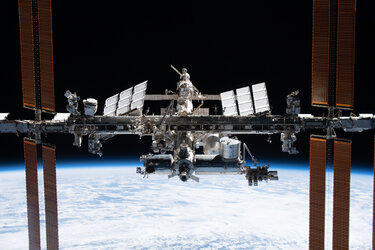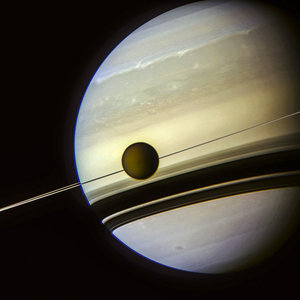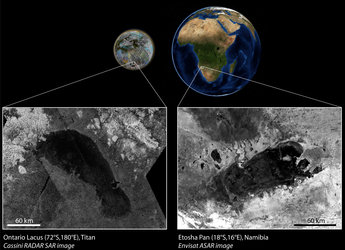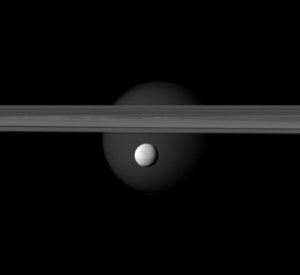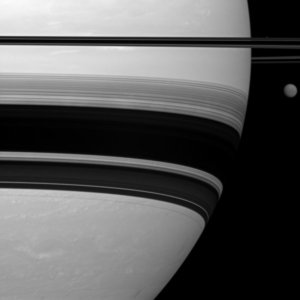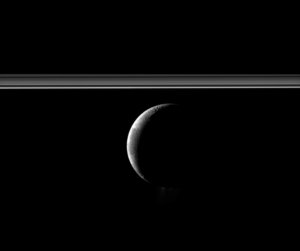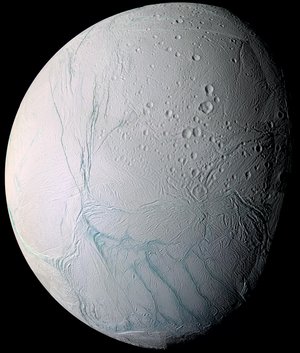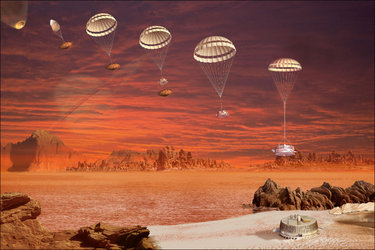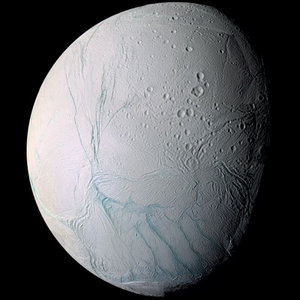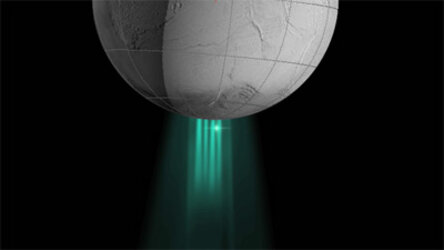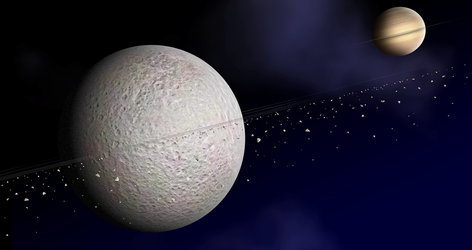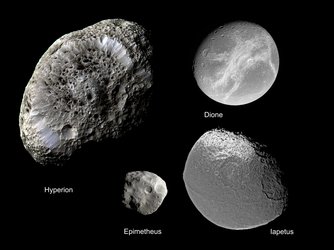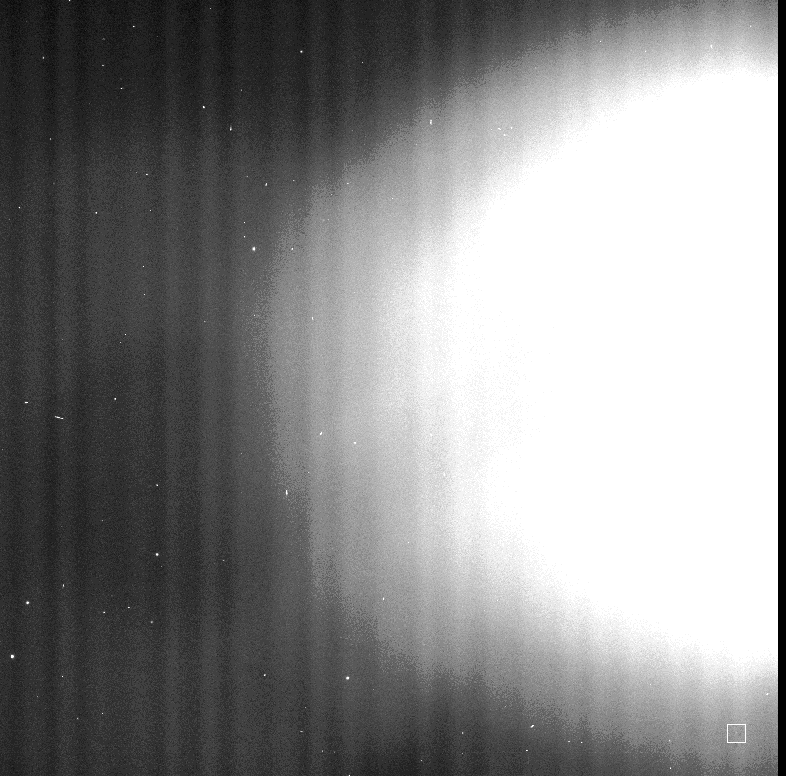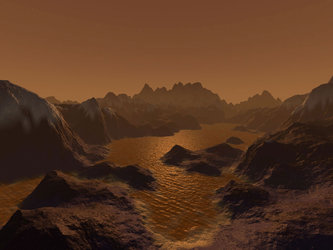Enceladus plumes and Dione
The international Cassini spacecraft was on its way to its lowest pass yet over the south polar region of Saturn’s moon Enceladus when it took this image of the impressive plumes.

The plumes are jets of water ice and vapour, mixed with organic compounds. With this flyby coming within a mere 74 km, scientists hope to learn more about the composition, density and variability of these remarkable features of Enceladus.

A day after the flyby, Cassini imaged Dione, another of Saturn’s moons. From a distance of 44 000 km, features like impact craters are clearly visible on the side of the moon that faces away from the Sun.
Notes for editors
The Cassini–Huygens mission is a cooperative project between NASA, ESA and the Italian space agency, ASI. The Jet Propulsion Laboratory, a division of the California Institute of Technology in Pasadena, manages the mission for NASA's Science Mission Directorate, Washington, DC, USA. The Cassini orbiter and its two cameras were designed, developed and assembled at JPL. The imaging operations centre is based at the Space Science Institute in Boulder, Colorado.















 Germany
Germany
 Austria
Austria
 Belgium
Belgium
 Denmark
Denmark
 Spain
Spain
 Estonia
Estonia
 Finland
Finland
 France
France
 Greece
Greece
 Hungary
Hungary
 Ireland
Ireland
 Italy
Italy
 Luxembourg
Luxembourg
 Norway
Norway
 The Netherlands
The Netherlands
 Poland
Poland
 Portugal
Portugal
 Czechia
Czechia
 Romania
Romania
 United Kingdom
United Kingdom
 Slovenia
Slovenia
 Sweden
Sweden
 Switzerland
Switzerland











